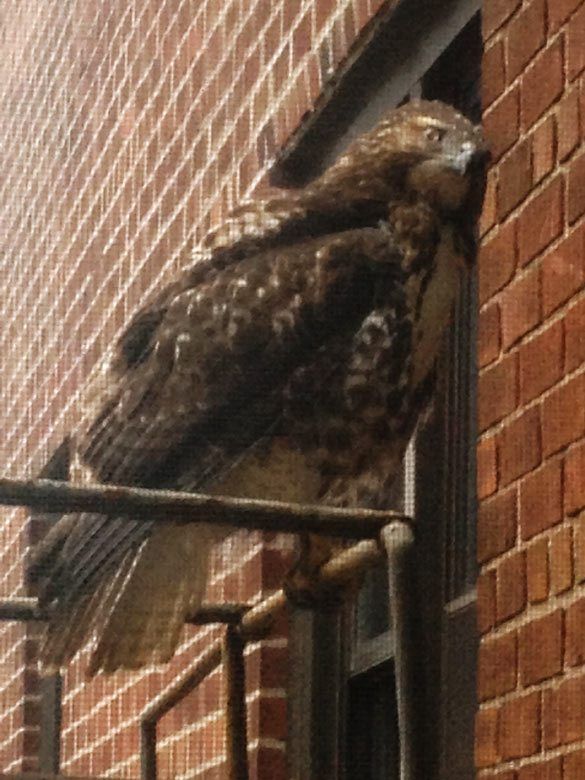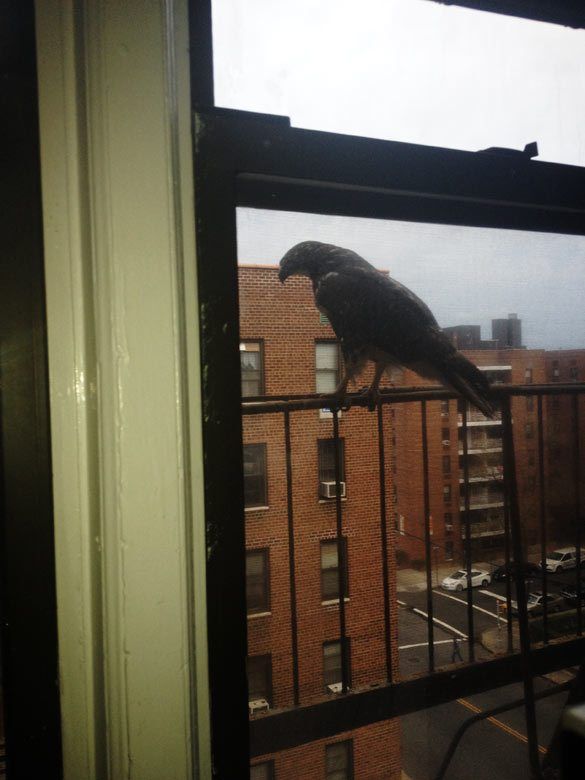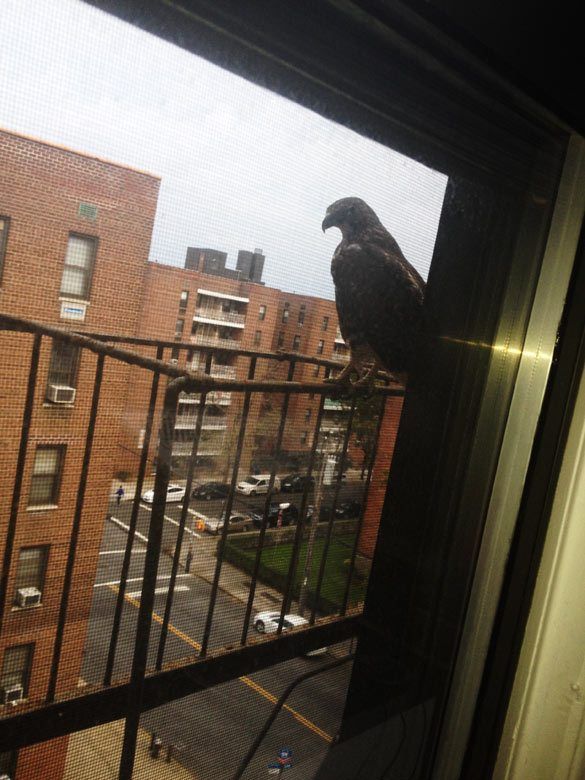Photos: Resident Gets Close-Up Look At Red Tailed Hawk Hanging On His Balcony

Update (6:16 p.m.): Reader Christina “Know-it-all” K. wrote in to correct me: it’s a red tailed hawk. A juvenile, which is why its tail isn’t red yet. And maybe this guy is a relative of Pale Male, the first red tailed hawk known to have nested on a building (near Central Park) rather than a tree. Actually, these guys are as rare as falcons are in the city, with 32 known nests.
Original story:
The scourge of fire escape burglaries plaguing Sheepshead Bay might be one reason to keep your windows shut tight, but here’s another: Sheepshead Bay’s peregrine falcon could eat your cat.
That may have been what drew this guy to the top floor fire escape of Ilan P., a resident of the Atlantic Towers co-ops on Avenue Z. According to Ilan, the winged friend took up residence Saturday afternoon, making himself available for a 10-minute photo shoot before flying off into the sunset.
“It took an odd interest in my cat. They had an old western stare down,” Ilan wrote to Sheepshead Bites. “I just thought it was awesome since I’ve never seen a hawk in Sheepshead. It’s very cool to see something different in nature in our area.”
Yes, friends, Sheepshead Bay has hawks and falcons. This fellow is probably the same one known to live on the top of St. Mark Roman Catholic Church’s steeple. You can often see him circling about his perch, getting some exercise or looking for a good meal.
And he’s hardly the only one in the area. We know there’s at least one other couple at the Marine Parkway-Gil Hodges Memorial Bridge. In fact, New York City tracks these guys, and is currently aware of at least 32 around the city. That said, this guy appeared to be without tracking bands, which means there may be more than researchers are aware of.
It wasn’t always this way. The falcons were placed on the endangered species list in the 1970s, as population dwindled with the introduction of chemicals including pesticides. The city and state launched a program to restore their population, and since 1992 the state Department of Environmental Conservation and the city Department of Environmental Protection have worked hand-in-hand in their efforts, which you can read about on the DEP’s website.
Falcons do love New York City, though. According to the DEP, the tall buildings and bridges remind them of their natural habitat, where they perch on cliffs. And the variety of tasty birds to eat – pigeons, sparrows, starlings and others – give them a nice diet, which they capture during dives at speeds ranging from 99 to 273 miles per hour.
Anyway, check out the video and other photos Ilan sent over.







